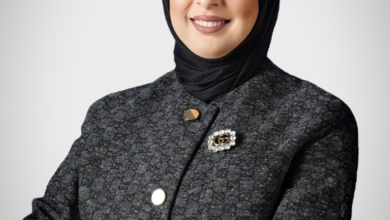The Smurfs in Kuwait: How a Kuwaiti Researcher Became the Guardian of a Belgian Legacy
The Smurfs, or Les Schtroumpfs as they are known in French, were created in 1958 by Belgian cartoonist Pierre Culliford, known as Peyo. What began as a comic book series soon became a worldwide phenomenon, translated into dozens of languages and beloved across continents.
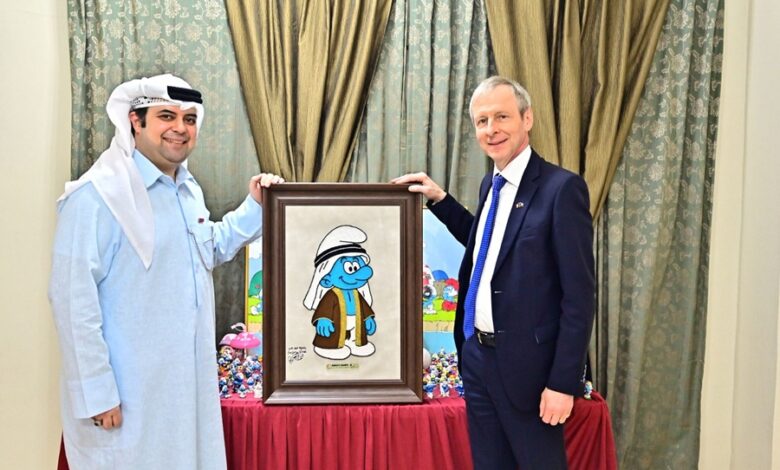
In a quiet corner of Kuwait City, a small blue world has come to life. Hundreds of smiling Smurfs — from vintage figurines to rare magazine editions — fill the shelves of Issa Abdul Rasoul Dashti’s home, each one carrying a story of nostalgia, art, and cultural connection.
For more than two decades, Dashti, a Kuwaiti researcher in British affairs, has been collecting Smurf memorabilia with the care of an archivist and the joy of a lifelong fan. His devotion recently caught the attention of Belgian Ambassador to Kuwait, H E Christian Doms, who, together with his wife, visited Dashti’s home to explore this rare and colorful collection.
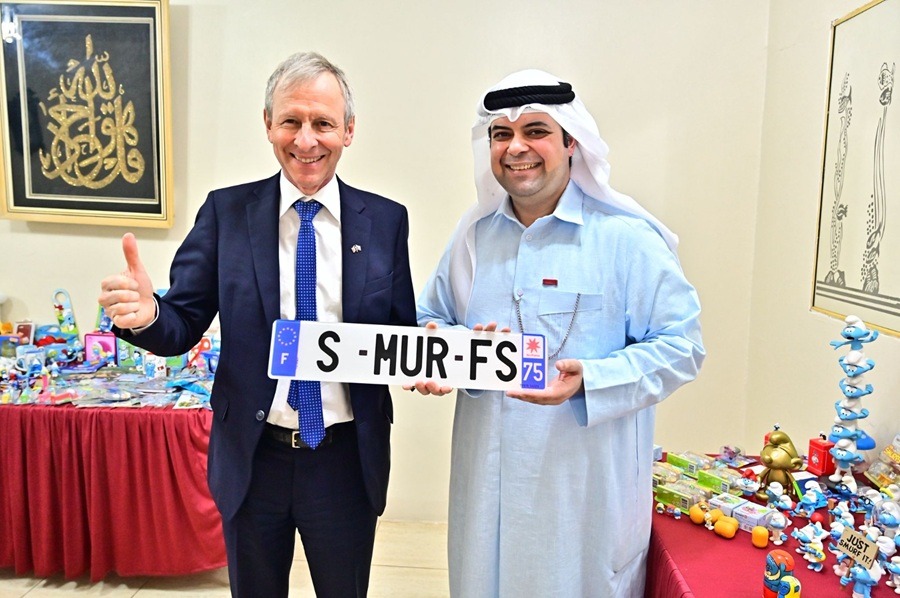
What I saw here is not just a passion for collecting,” said Ambassador Doms, deeply impressed by what he described as a “unique and exceptional experience.”
“It reflects a refined cultural spirit and a genuine effort to preserve a beautiful Belgian legacy that continues to inspire people around the world.”
A Collector’s Journey That Began in Kindergarten
Dashti’s fascination with The Smurfs began in early childhood, when the cheerful blue characters first appeared on Kuwaiti television in the late 1970s and 1980s. Like many children of that era, he was captivated by their simplicity, their songs, and their sense of community.
“I started collecting Smurf toys when I was in kindergarten,” he recalls. “Back then, I didn’t realize that what began as play would one day become a cultural project.”
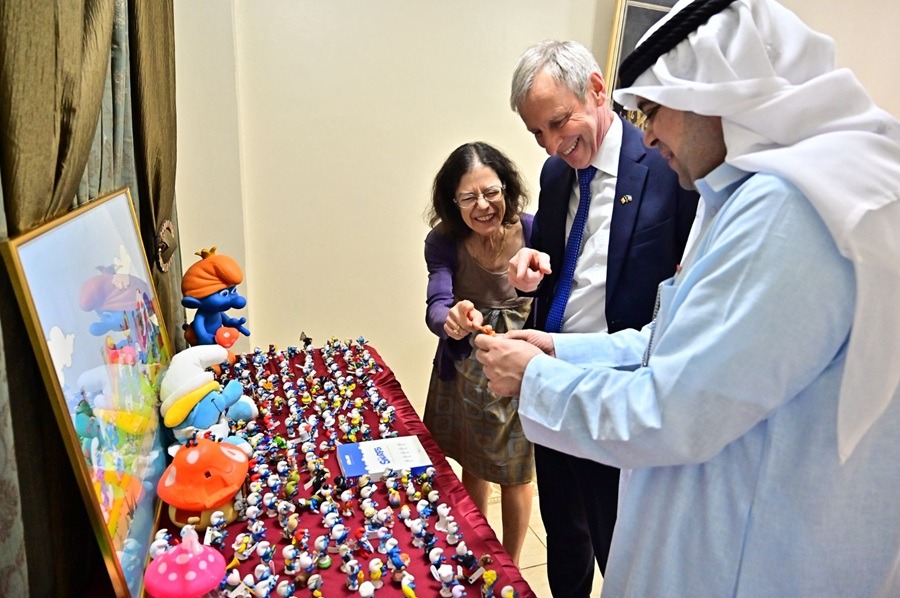
Over time, that childhood curiosity evolved into a sophisticated and historically rich collection that now includes pieces from West Germany, Iraq, and even Arabic-language editions of Smurf magazines. Each item tells a small part of a global story — how a Belgian comic strip from 1958 became a universal symbol of joy and cooperation.
When Diplomacy Meets Nostalgia
The Belgian Ambassador’s visit was more than a friendly gesture — it was a celebration of the soft power of art and storytelling. Ambassador Doms was so moved by the collection that he announced plans to display selected Smurf figurines from Dashti’s archive during Belgium’s National Day celebration on November 17 in Kuwait.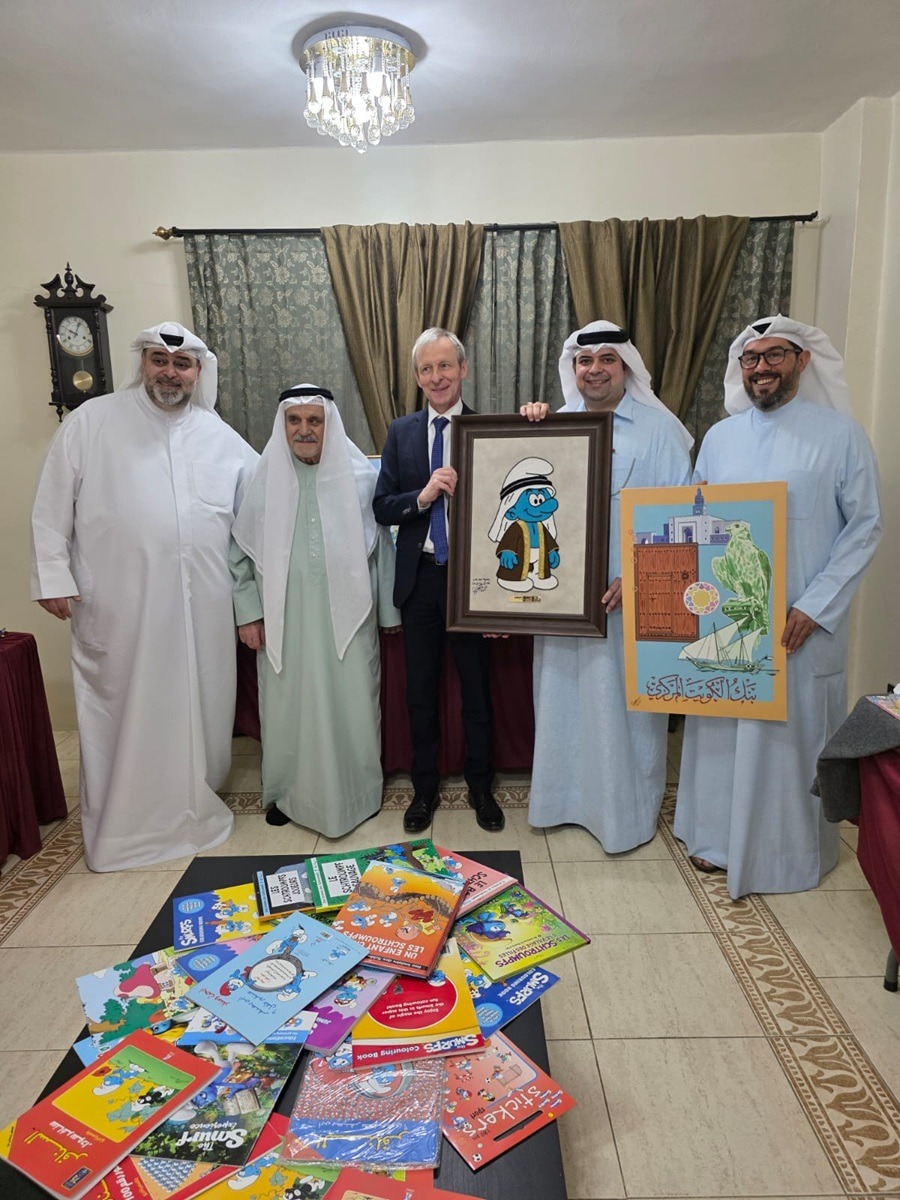
For Dashti, it was a proud moment — one that linked his personal passion to a broader cultural dialogue between Belgium and Kuwait. “This visit is the second time I’ve shared my collection with the Belgian Embassy,” he said. “It reflects how art can bring nations closer.”
Beyond his Smurf collection, Dashti has spent years documenting Kuwaiti-Belgian relations. He has written a book and two booklets—one chronicling the history of bilateral relations and another detailing Princess Astrid’s visit to Kuwait—as well as organizing a documentary exhibition dedicated to the same theme.
A Belgian Creation, an Arab Memory
The Smurfs, or Les Schtroumpfs as they are known in French, were created in 1958 by Belgian cartoonist Pierre Culliford, known as Peyo. What began as a comic book series soon became a worldwide phenomenon, translated into dozens of languages and beloved across continents.
In Kuwait and the Arab world, The Smurfs hold a special place in the collective memory. The Arabic-dubbed versions that aired in the 1970s and 1980s became part of childhood for an entire generation, often accompanying children’s programming on Kuwaiti television. Their songs, voices, and gentle humor inspired local theater plays, musical adaptations, and artistic works.
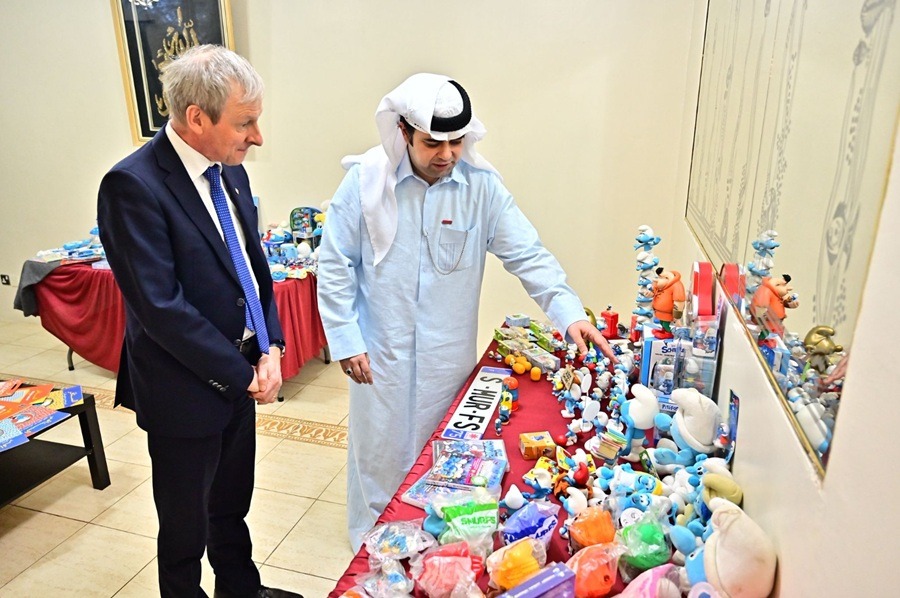
“The Smurfs represent more than animation,” Dashti reflected. “They symbolize cooperation, simplicity, and the happiness of shared life — values that resonate deeply with us.”
Preserving a Shared Cultural Heritage
For Dashti, collecting Smurf memorabilia has become much more than a hobby. It is a form of cultural preservation — a way of documenting how stories from one small European village of blue characters have touched hearts in Kuwait and beyond.
Each figurine, comic, and magazine in his home tells two stories at once: one of Belgian creativity and another of Kuwaiti affection for art that transcends borders.
“When I look at these characters,” he said, “I see not only my own childhood, but also a reminder that culture — no matter where it begins — belongs to everyone who loves it.”
As Belgium prepares to celebrate its National Day with a touch of Smurf-blue charm, Issa Dashti’s collection stands as a bridge between two cultures — a heartfelt reminder that the magic of childhood can travel far, connecting hearts from Brussels to Kuwait City, one tiny Smurf at a time.








